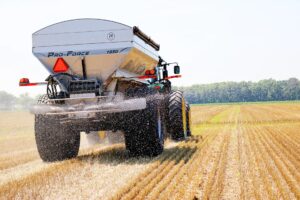
In an age where artificial intelligence (AI) is redefining the way machines interpret the world, visual data has become one of the most powerful assets for technological progress. From self-driving cars and facial recognition systems to advanced medical imaging, the accuracy and reliability of these technologies depend heavily on one critical process — image annotation. By turning unstructured visual data into machine-readable information, image annotation services play a crucial role in bridging the gap between raw images and intelligent AI systems.
The Role of Image Annotation in AI and Machine Learning
AI systems, especially those that rely on computer vision, need to “see” and understand visual data much like humans do. However, before machines can learn to recognize patterns or make decisions based on visuals, they need structured datasets. This is where image annotation comes in.
Image annotation involves labeling, tagging, or categorizing different elements within an image to make it interpretable for AI algorithms. This could include identifying objects, shapes, boundaries, emotions, or even contextual elements within an image. These annotations serve as the foundation for training AI models, enabling them to detect, classify, and predict with precision.
Without proper annotation, even the most advanced algorithms would struggle to distinguish a cat from a dog, or a pedestrian from a street sign. Hence, the quality of the annotation directly influences the accuracy of machine learning models and the overall success of AI-driven applications.
Why Image Annotation Services Are Vital for Modern Businesses
As industries embrace automation and data intelligence, organizations increasingly rely on image annotation services to unlock value from their visual data. Professional annotation services ensure accuracy, scalability, and consistency across large datasets — qualities essential for the reliable performance of AI systems.
For example:
- Healthcare providers use annotated images to train diagnostic AI tools capable of identifying tumors, fractures, or anomalies.
- Retailers leverage annotated product images to power visual search and recommendation systems.
- Autonomous vehicle manufacturers depend on detailed annotations of roads, pedestrians, and obstacles to enhance vehicle perception.
- Agriculture and environmental sectors use image data to monitor crop health or assess climate conditions through satellite imagery.
By outsourcing to expert annotation teams, businesses gain access to a combination of human intelligence and automation tools, ensuring the highest quality of data preparation for their AI pipelines.
Advanced Techniques Powering Image Annotation
Image annotation is no longer limited to simple bounding boxes or polygons. Modern techniques incorporate advanced tools and AI-assisted automation to improve both efficiency and precision.
Key methods include:
- Semantic Segmentation: Divides an image into regions with distinct meanings, allowing AI to understand the context of each object.
- Instance Segmentation: Differentiates between multiple objects of the same class, such as identifying each vehicle in traffic separately.
- Keypoint and Landmark Annotation: Marks specific points of interest within an object, often used in facial recognition or pose estimation.
- 3D Cuboids: Helps train models to understand depth and perspective in spatial data.
- Polyline Annotation: Ideal for applications like lane detection in autonomous vehicles.
To push the boundaries further, AI research teams are now adopting Advanced Image Annotation Techniques for Generative AI. These innovative approaches enhance model learning for complex generative tasks, such as image synthesis, object manipulation, and simulation, which are increasingly critical in industries like virtual reality, e-commerce, and creative design.
The Intersection of Image Annotation and Generative AI
Generative AI models rely on large, high-quality annotated datasets to generate realistic images, simulations, and predictions. The integration of accurate annotation enables these models to create authentic and reliable outputs. For instance, generative models trained with meticulously annotated data can simulate medical images for research, create synthetic environments for training autonomous vehicles, or even assist in creative design automation.
High-quality annotation not only improves the realism of these generative models but also minimizes biases, reduces hallucinations, and increases interpretability — all essential for building trustworthy AI systems.
Ethical Considerations in Image Annotation
As visual data often involves human faces, environments, or private spaces, ethical handling is paramount. Organizations must ensure that annotation teams follow data protection laws, maintain confidentiality, and avoid reinforcing biases within datasets.
Ethical annotation also involves creating fair and inclusive datasets by representing diverse demographics, environments, and contexts. This ensures that AI systems operate equitably and accurately across different user groups, reducing the risks of biased outcomes.
Top 5 Companies Providing Image Annotation Services
The demand for reliable annotation partners has grown rapidly, leading to the emergence of several specialized providers globally. Below are five top companies recognized for their excellence in delivering professional image annotation solutions:
- Digital Divide Data (DDD)
A global leader known for combining technology expertise with social impact, Digital Divide Data offers scalable and high-quality data labeling and annotation services for AI and computer vision applications. Their teams employ a blend of human precision and automation to deliver ethically sourced, accurate datasets that empower AI innovation across industries. - Scale AI
Based in the U.S., Scale AI is renowned for its automation-driven annotation workflows. They serve industries like autonomous driving, defense, and e-commerce, offering custom solutions that accelerate machine learning development. - CloudFactory
CloudFactory provides managed teams for data labeling and image annotation, emphasizing quality control and workforce scalability. Their hybrid model combines human intelligence with automation for efficient data preparation. - iMerit
iMerit delivers high-accuracy annotation services across computer vision and NLP domains. Their secure data-handling protocols and specialized workforce make them a trusted choice for enterprises handling sensitive visual data. - Appen
With decades of experience in data annotation, Appen supports AI initiatives through its global crowd workforce. Their services cover a broad spectrum of annotation types, ensuring diverse use cases and flexible scalability.
Future Outlook: The Next Evolution of Image Annotation
As AI continues to advance, image annotation is moving toward greater automation and intelligence. The integration of AI-assisted annotation tools, real-time quality control, and adaptive learning systems will redefine efficiency and scalability. Furthermore, innovations in generative AI will drive the need for more context-aware and semantically rich annotations, fueling the next wave of intelligent systems.
Companies that invest in high-quality image annotation today will be better positioned to build reliable, transparent, and high-performing AI solutions in the future.
Conclusion
Image annotation is more than just a data-preparation task — it is the foundation of AI-driven visual intelligence. As industries increasingly depend on computer vision and generative models, the need for precise, ethical, and scalable annotation grows stronger. Through innovative techniques, professional annotation services, and responsible practices, businesses can transform vast volumes of visual data into actionable insights that shape the future of AI.

